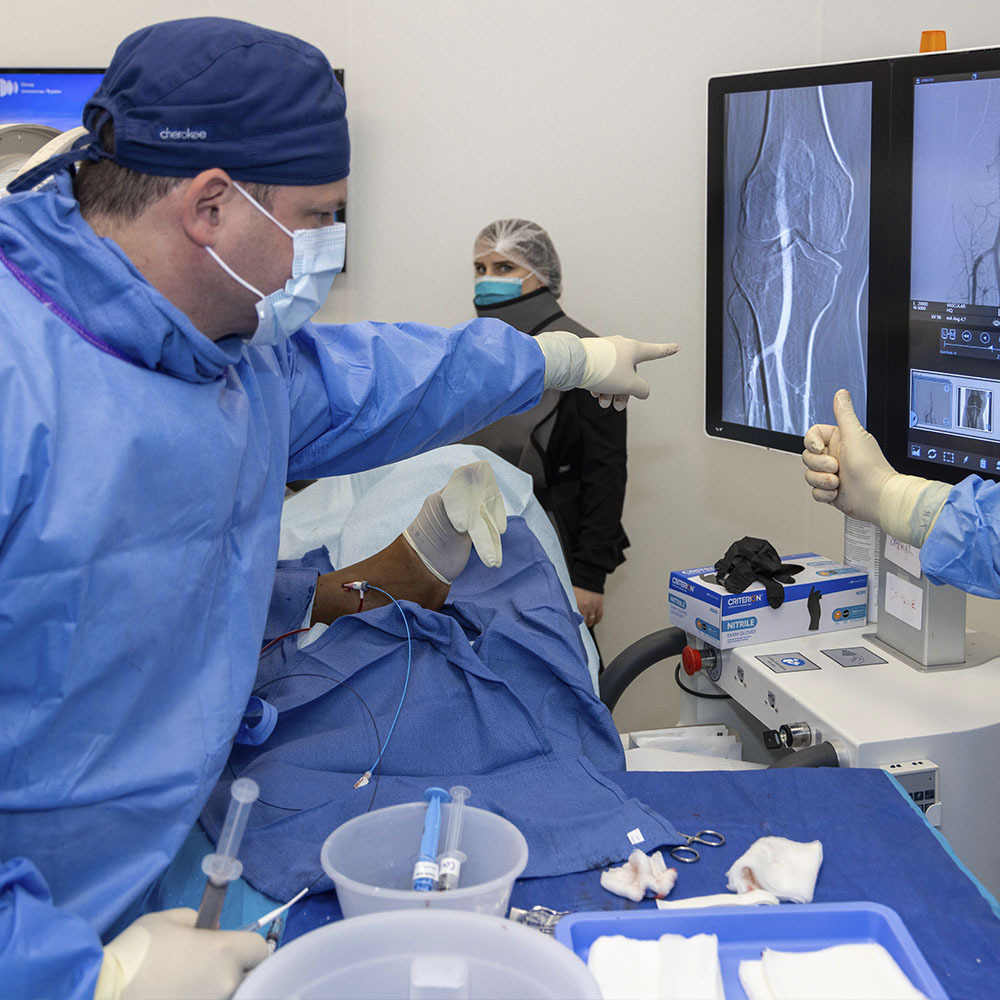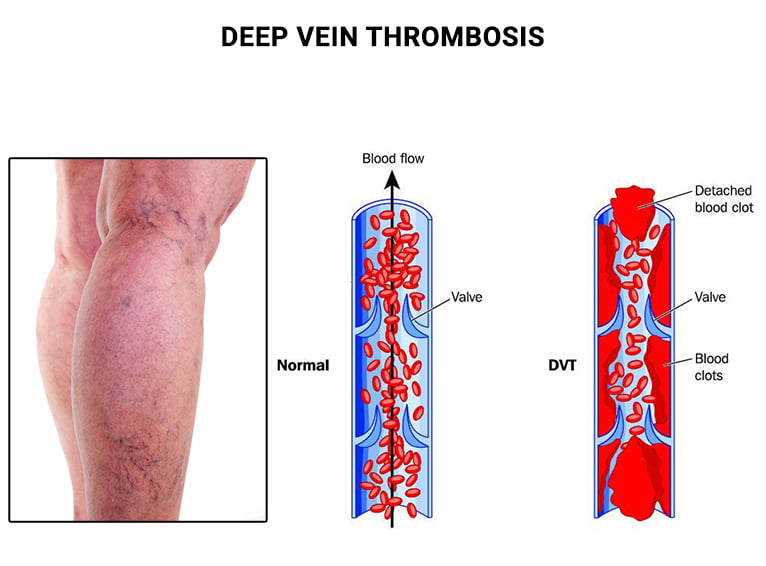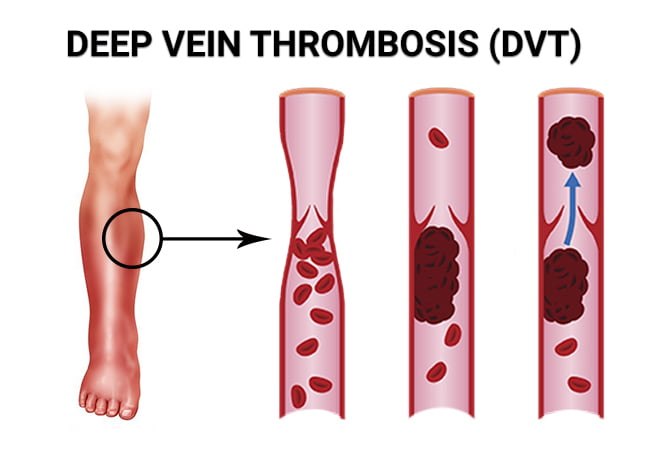
While it’s entirely possible you won’t recognize it if you develop a deep vein thrombosis (DVT), chances are you’ll notice drastic symptoms like throbbing pain and inflammation. DVT happens when you get a blood clot in your leg or hip. You need to rely on an experienced DVT doctor and vein specialist in Brooklyn, NY and Bronx, NY to ensure the best DVT treatment. Dr. George Bolotin and his team of experts at Astra Vein Treatment Center provide exceptional diagnosis, DVT surgery, and even chronic DVT treatment. Call now to schedule an appointment.
 Deep vein thrombosis (DVT) is the result when blood flow in one of the deep veins of your body is blocked by a blood clot. DVT occurs most often in a calf or thigh, but it can also happen in your pelvis or arms. A deep vein thrombosis usually results after you have an accident or following surgery on your legs or your hips.
Deep vein thrombosis (DVT) is the result when blood flow in one of the deep veins of your body is blocked by a blood clot. DVT occurs most often in a calf or thigh, but it can also happen in your pelvis or arms. A deep vein thrombosis usually results after you have an accident or following surgery on your legs or your hips.
Seek DVT treatment as soon as you can because a blood clot in your leg can lead to serious complications, such as a pulmonary embolism. This is when the clot travels to one of your lungs and becomes lodged there, which can be life-threatening. For DVT surgery or chronic DVT treatment, you need to rely on an expert, which you’ll find at Astra Vein Treatment Center in Brooklyn and Bronx.
DVT doctor George Bolotin provides relief through an accurate diagnosis and deep vein thrombosis treatment, as well as treatment for other vein conditions, such as:

An injury to your lower body can lead to DVT. If you’ve had surgery that involves your hips or legs, it too can lead to DVT. DVT occurs because of poor blood flow, damage to one of the veins or excessive blood clotting.
Other factors that increase your risk of developing deep vein thrombosis include:

DVT can occur at any age, but you’re at greater risk once you pass the age of 60. Some people develop this condition even though they have no other known risk factors, so pay attention to your symptoms and visit a doctor if you experience any prolonged pain. Pain is your body’s way of telling you something’s wrong.
A blood clot in your leg usually happens in just one leg.
You’ll typically notice when a blood clot forms due to symptoms in the affected leg that may include:
The pain associated with a DVT often begins in the calf and may start out feeling like a cramp. Some people have no noticeable symptoms, which can be especially dangerous.
If the blood clot travels to your lungs, symptoms can come on suddenly and include:
The goal of DVT treatment is to stop the clot from getting bigger and prevent it from traveling to your lungs. Your best vein doctor in Brooklyn and Bronx also aims to reduce the risk that DVT comes back after treatment.
Options for DVT treatment include:
If you’re at low risk of developing another clot, short-term treatment for a few months may be all you need. Recurring DVT is considered a chronic illness. Chronic DVT treatment can last several years and possibly throughout your life.
If you believe you may have a DVT, see your vein specialist in Brooklyn and Bronx for an accurate diagnosis. If you develop symptoms of a pulmonary embolism, this condition is life-threatening, and you should seek emergency care. Fortunately, you don’t have to go far to find an expert vascular specialist.
Dr. Bolotin at the Astra Vein Treatment Center in Brooklyn and Bronx is a highly recommended specialist for the treatment of vein conditions, fibroids, and peripheral artery disease. He’s an Interventional Radiologist who focuses on the vascular abnormalities in your body. Contact the vein center today for a consultation.
Vein & Vascular Medical Care
4209 Ave U, Suite A.
Brooklyn, NY 11234
(347) 934-9068
Vein & Vascular Medical Care
869 E Tremont Ave
Bronx, NY 10460
(929) 447-4563
Vein & Vascular Medical Care
30-71 Steinway St
Astoria, NY 11103
(929) 486-2201